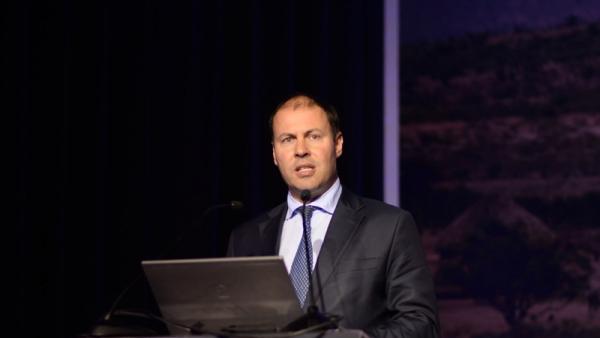
Elena Collinson, Senior Project and Research Officer, Australia-China Relations Institute, University of Technology Sydney |
This article appeared in the Australian Institute of International Affairs' blog, Australian Outlook, on October 4 2018.
A potential hurdle in Australia-China relations lies just around the corner. A decision on the bid by Hong Kong-listed Cheung Kong Group (CK) to acquire APA Group, Australia’s largest natural gas infrastructure business, is expected relatively soon. There is speculation it will be handed down before the deal is voted on by APA shareholders in November.
A rejection of the bid by the Treasurer would quickly follow the ban on Huawei and ZTE from participating in Australia’s 5G network. This could feed Beijing’s view that Chinese investment – irrespective of whether it hails from the mainland or not – is being singled out.
Policy consistency
So far the Morrison Government has maintained a neutral tone in the public sphere in an effort to avoid another ratcheting up of tensions.
Scott Morrison and his senior ministers had in their previous ministerial incarnations dealt with the Australia-China bilateral relationship in a mostly pragmatic manner. There is so far no evidence they are in any rush to roll back Malcolm Turnbull’s ‘reset’ or engage in any wholesale change in policy direction. As Marise Payne emphasised in her first interview as foreign minister-designate, the new administration is aiming for foreign policy consistency.
Indeed, over the last few weeks the new prime minister and foreign minister have appeared to be exceedingly careful with rhetoric on China, revealing a lack of appetite to disturb the thaw in relations between the two countries via megaphone diplomacy.
When asked to comment on China’s decision in late August to render the ABC’s website and apps inaccessible, Morrison said, 'China’s a sovereign country, they make decisions about what happens there.'
On August 27, foreign minister-designate Marise Payne was invited to revisit comments she had made earlier in the year appearing to endorse a US assessment of China and Russia as greater threats to national security than Islamic terrorism. She declined to articulate support for the evaluation, stating in response that 'what we want to ensure is that countries that are participating in our region…are making a positive contribution to security and stability and not undermining it.'
In the face of mounting domestic and international concerns about China’s mass detention of Uighur Muslims in Xinjiang, and other human rights violations perpetrated against the community, the Minister for Foreign Affairs’ office released a brief statement acknowledging that the Australian government was 'concerned about the situation' and that Australian officials were continuing to relay concerns to their Chinese counterparts. Her office declined to comment on whether or not the government would consider imposing sanctions on Chinese Communist Party officials and mainland Chinese companies, as the US is reportedly considering.
What decision is likely?
The considerations around the CK bid for APA are not necessarily as cut-and-dried as the telecommunications companies’ ban. Some factors may assist it getting over the line.
The Australian Competition and Consumer Commission gave the bid the green light on 12 September following a court-enforceable undertaking by CK to divest significant gas assets in Western Australia. This would allow for another entity to acquire the assets, creating 'an operator similar in size' to CK’s current operations in WA.
Two-thirds of the investors in CK are also reportedly the same as the investors in APA. CK shareholders include American firms BlackRock, Vanguard and State Street, the three biggest US asset managers. Moreover, APA is an operator of so-called dumb pipelines, 'without data capacity and no ownership of the molecules that flow through them,' rendering the security risk less than that around other types of infrastructure.
One other consideration is that Australia is in the midst of trying to secure a Free Trade Agreement with Hong Kong at the moment. Negotiations may suffer a setback if one of its big publicly-listed companies is rejected on national security grounds.
On the other hand, some junior ministers and backbenchers in the Morrison government have been vocally agitating for a block. The gas sector is regarded as sensitive: in the second reading of the Security of Critical Infrastructure Bill last year Minister for Finance Mathias Cormann said, 'Gas plays the most versatile role in the energy network, and the security and reliability of the electricity sector is reliant on gas supply.'
This ties in with concerns around the cumulative level of ownership of energy supply infrastructure by Chinese mainland/Hong Kong-linked companies.
CK is currently one of the biggest foreign investors in Australian energy infrastructure. The Western Australian gas pipeline market is already a duopoly following CK’s acquisition of the DUET Group last year. The company holds a majority stake in South Australia’s primary electricity distributor (ETSA Utilities) and a majority stake in Victoria’s largest electricity distributor (CHEDHA Holdings, the holding company of CitiPower and Powercor), among other interests.
While CK is a Hong Kong-listed company, there is a view in Canberra that the line between Hong Kong and mainland China is becoming increasingly permeable given that Hong Kong’s autonomy is effectively 'granted from the centre'. The Director of the Legal Affairs Department of the People’s Republic of China’s liaison office in Hong Kong in December last year said Hong Kong is a 'part of red China,' emphasising that the mainland’s constitution and Hong Kong’s Basic Law had a 'mother-child' relationship. This had been a subject that Beijing representatives in Hong Kong had traditionally steered clear of. And on 15 August, China’s Vice-Premier Han Zheng spoke of 'allowing Hong Kong and Macau people to shoulder the national responsibility of achieving the great revival of the Chinese nation.'
Ramifications
Should the Foreign Investment Review Board advise the government to reject the bid – and this advice is unlikely to be ignored by the Treasurer – it would likely be viewed by Beijing as a continued hardening stance by Australia. However, this ought to be kept in perspective. Foreign investment knockbacks don’t always figure as problems in the bilateral relationship. By China’s standards, majority-foreign ownership of domestic energy infrastructure would be unacceptable.
The public messaging in this instance might be the most important: should the bid be rejected, deft management of the announcement and subsequent government commentary would be needed.
Author
Elena Collinson is Senior Project and Research Officer at the Australia-China Relations Institute at the University of Technology Sydney.


